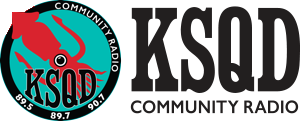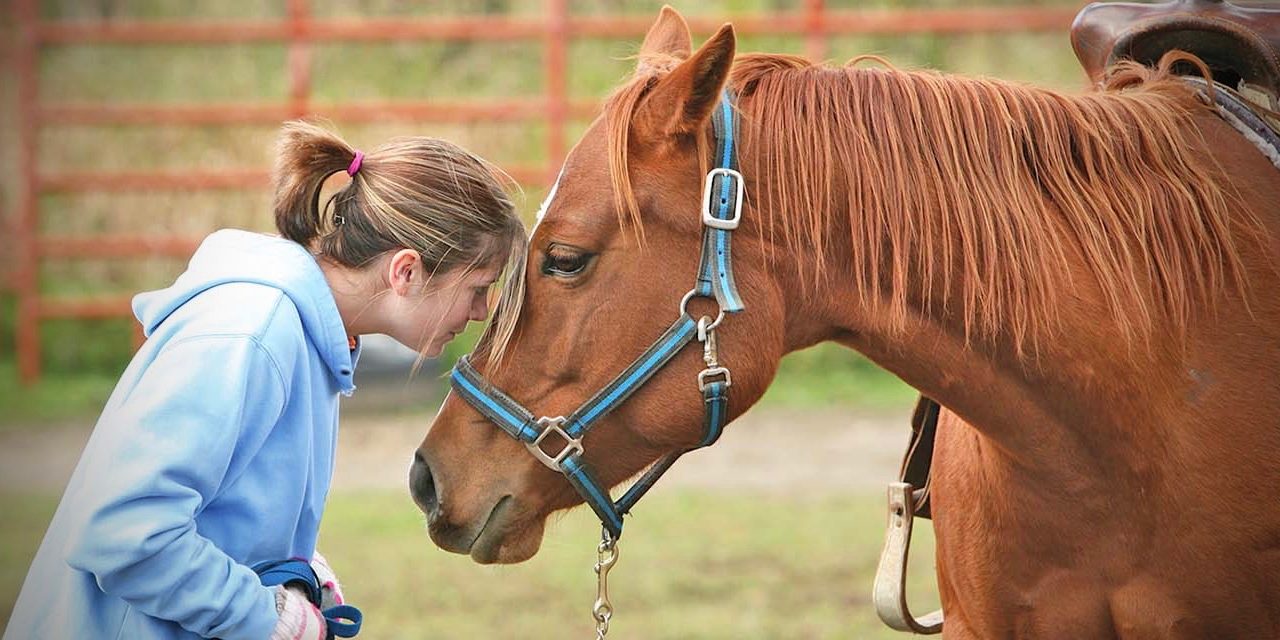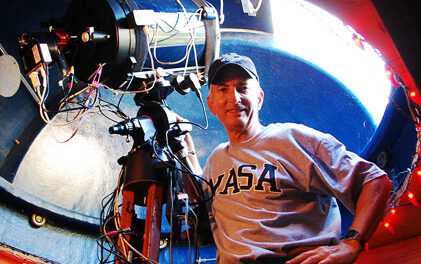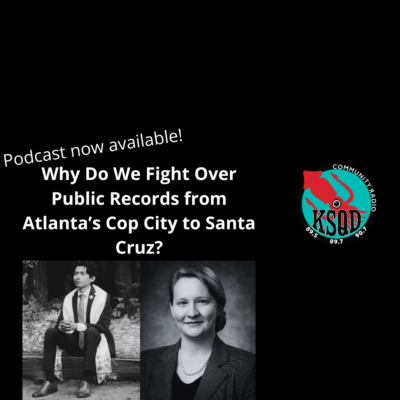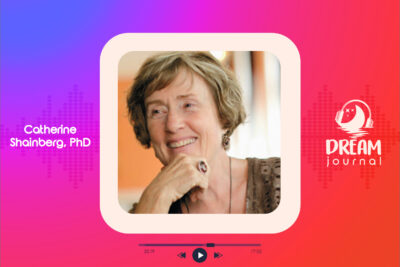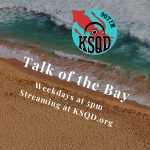
Divine Equine Assisted Therapy Center is always looking for volunteers to help out with the horses and around the ranch. To find out how you can volunteer, you can contact Kristy through the website here
HOST INTRO: You’ve probably heard of therapy dogs or cats, but have you ever heard of a therapy horse? It may sound like a new-age technique, but working with horses to guide therapeutic healing is actually a time-honored practice dating back to the ancient Greeks. It’s called Equine-Assisted Therapy, and there’s a therapy center right here in Santa Cruz county. In addition to the physical benefits of horseback riding, working with horses has profound psychological benefits. Emily Harwitz has this story.
Sound: horses breathing into the microphone, ambient birds
EH: That’s the sound of Kushla breathing in to the microphone
Kristy: Hi Buddy. He’s a big gentle giant. He’s our biggest guy. Hi sweet boy. He’s called a gypsy vanner.
EH: And that’s the sound of Kristy Newstrom, executive director and founder of Divine Equine assisted therapy center. Kushla is a stunner: a black and white piebald with wavy flowing locks and ice blue eyes,. He’s one of several horses at Divine Equine Therapy Center in Soquel, Santa Cruz who works with clients, or students, in therapy.
Kristy: It’s a therapeutic center, for the most part. We have two different programs. One is therapeutic riding and one is psychotherapy with horses.
EH: Both of these programs fall under the category of equine-assisted therapy, which is treatment that incorporates horses in the rehabilitative process, like physical rehab, speech pathology, or mental health.
Kristy: We have four horses. Two are new, two have been in the program quite some time. We have Hollywood, Pepper, Kushla—
EH 4: —the horse we just met sniffing the microphone—
Kristy: —and Felicity.
EH: Horses and humans have a long history. Some scholars believe horses were first domesticated around 4,000 BC in Mesopotamia and China. Others think it was the Scythians from the steppes of southern Russia who tamed the horse around 3,000 B.C.[1] Fast forward to the 400’s BC and we get Hippocrates writing about the therapeutic benefits of horseback riding, like improving motor function and core strength. And even more recently, the mental, emotional, and psychosocial benefits of being around horses have been getting more attention, thanks to outspoken proponents like Temple Grandin: a famously autistic scientist and animal behaviorist who said “People and animals are supposed to be together. We spent quite a long time evolving together, and we used to be partners.”
But how do they train horses to work with humans in all kinds of states of mind, from calm to agitated?
Kristy: First they’re vetted to make sure they have the proper personality for this kind of work because it does take a special kind of horse to be able to, to take on all these personalities, all these energies. We have about 80 people come through here a week. And so we have to make sure that these horses are going to be able to handle anything. So we do, we bring them here, we train them to and we try to desensitize them to any and all things that we can think of whether it be an animal running through the arena. If it’s a ball rolling under their legs because we play games during lessons. If it’s a student running around because they’re having a moment, and yelling and screaming, we want the horses to be able to be like, ‘Oh, I’m okay, I’m safe, they’re not going to hurt me.’ So we do constant training with them to make sure they are completely level-headed.
EH: Clients can range from young children to elder adults with a wide range of special needs, like anxiety, autism, ADHD, PTSD. So, what makes horses effective at helping clients heal? Horses are herd animals and they’re also prey animals. Not only are they vigilant to their surroundings, but also sensitive to social cues from their herd. Studies have shown that horses are likewise sensitive to a human’s mood and tone of voice and respond intentionally. Research has even shown that a horse’s heart rate will mirror their rider’s heart, regardless of outside stimuli. Horses are more likely to follow instructions when the person giving a vocal command is looking at them, which requires the person to be present and focused[2].
Kristy: They just really love their work. they just, they nuzzle, some of them and those are like the little little kids, and make sure they like follow them around and and see where they’re going. It’s really, really cute. I was just talking with one of my instructors—one of our horses, Pepper likes to play chase. She kind of like, crouches down and you’re like, ‘Okay, let’s go,’ and you run out a little bit and then she’d kind of go you know like, kind of like a dog you know they duck down a little bit, and you go out her a little bit more than she takes off and she barks and she kicks in, she jumps. She runs around and you run after her and it’s there just the really silly animals. There really are like 1000 pound toddlers. Very smart 1000 pound toddlers.
EH: Dogs are cuddly, and cats are cute, but a large horse is a powerful presence. According to a national study of practitioners, peoples’ tendency to anthropomorphize animals is crucial to the therapeutic experience. The way a client interprets a horse’s behavior can give insight into the client’s own emotional world. Horse therapy practitioners say that the bond or attachment between client and horse can often serve the client as a metaphor for their other relationships.[3]
Kristy: It also creates an environment where they get to be social. We don’t have group lessons, but they have a volunteer team with them, like a horse leader, someone who leads the horse around, and sometimes they have side walkers and those people are there for emotional support or to help them stay on the horse. And that’s a big deal, too, because—especially right now—nobody really has social interactions. And so we’ve been able to create a safe container for them to be able to socialize, and they love their teams.
EH: Kristy tells me that the number of clients, especially younger students, has increased several fold over the past year’s pandemic. Because equine-assisted therapy can be expensive, Kristy’s horse therapy center is working to partner with community groups and provide scholarships for students in need.
Standing here in Soquel, surrounded by nature and these hoofed beauties, I feel grounded and peaceful. While the clinical studies and the science behind horse-human interactions are still developing, the stories from practitioners and clients alike speak loudly to the healing power of horses.
SOUND: Horse breathing out and flapping its lips.
EH: With the UC Santa Cruz Science Communications program, for KSQD radio, I’m Emily Harwitz.
